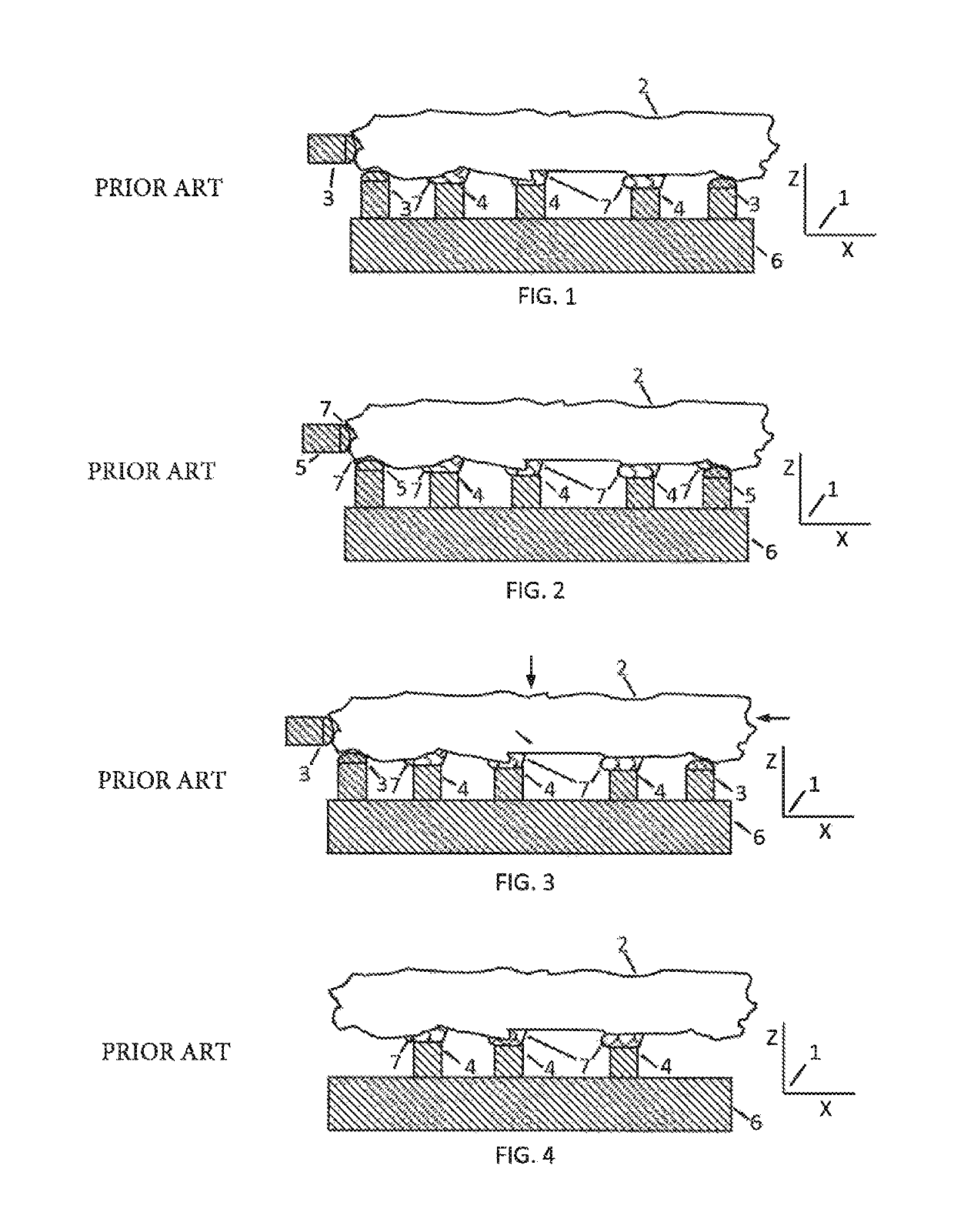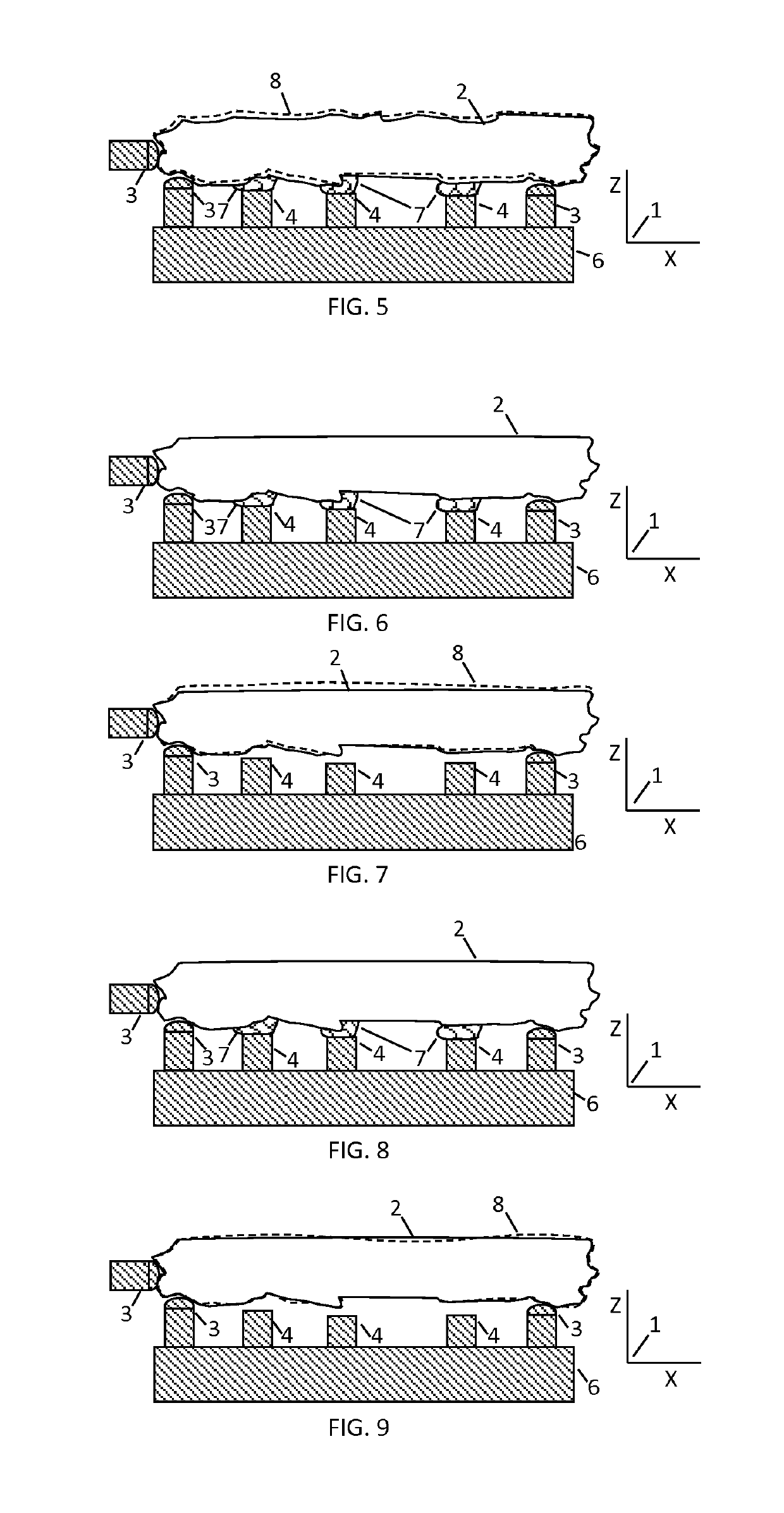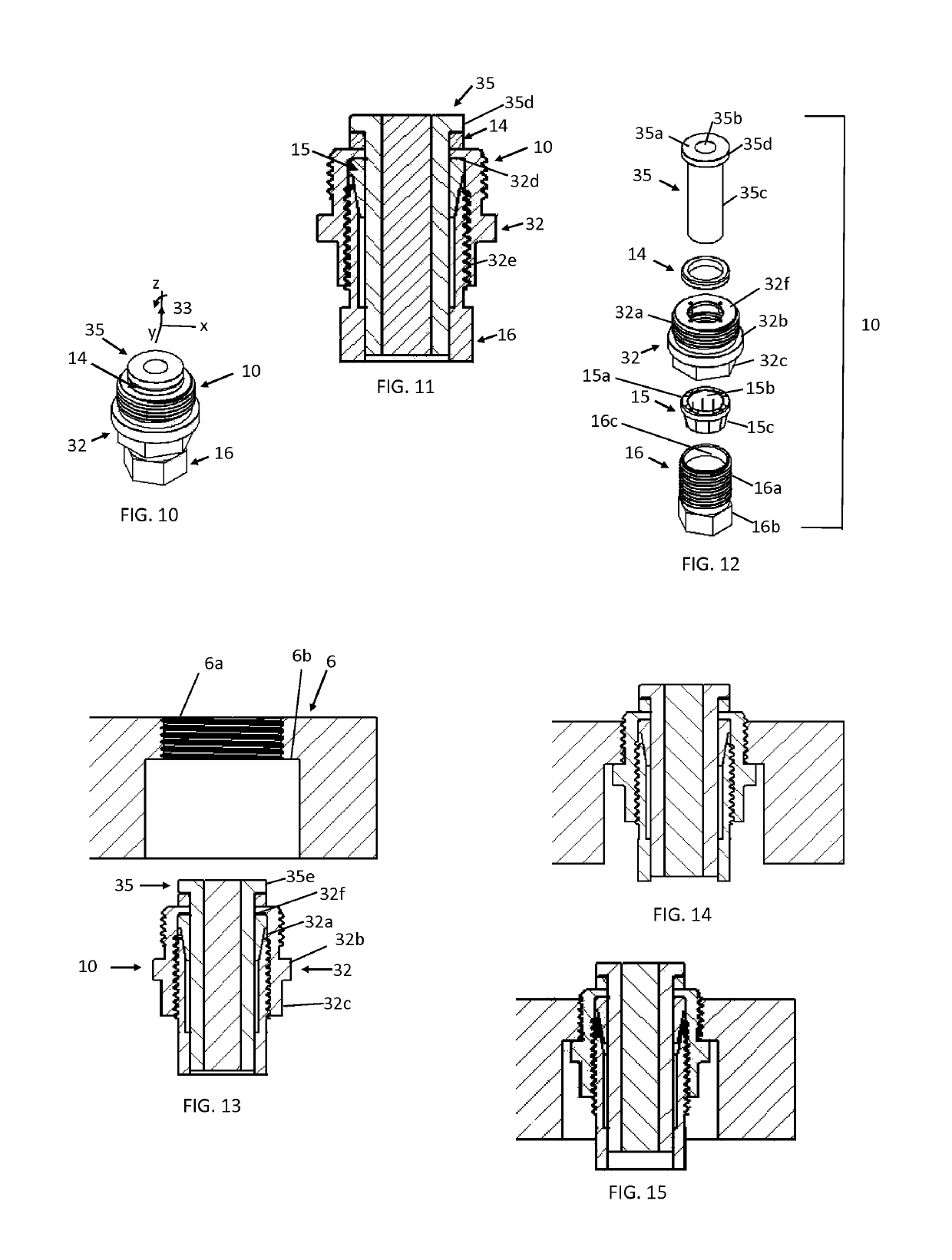Method and devices to minimize work-piece distortion due to adhering stresses and changes in internal stresses
a technology of which is applied in the field of methods and devices to minimize workpiece distortion due to adhesion stress and internal stress changes, can solve the problems of previously machined surfaces distorted, adhesion process exerting stress, and affecting the holding strength of adhesive fixtures, so as to reduce the effect of holding strength
- Summary
- Abstract
- Description
- Claims
- Application Information
AI Technical Summary
Benefits of technology
Problems solved by technology
Method used
Image
Examples
Embodiment Construction
[0116]One component of this invention is the concept of a floating adhesive fixture device. Most embodiments of a floating adhesive fixture device include the following components:
[0117]1. An outer body that is affixed to a fixture base;
[0118]2. A solid, distinct fixture element with a fixing surface to adhere the work-piece and that can be displace relative to the outer body within a continuous, finite range and at any position within this range can have its displacement freedom stopped;
[0119]3. A clamping mechanism that can make contact with the fixture element while it is at any position within its prescribed range and in repeated fashion:
[0120]a) engage to prevent displacement of the fixing surface without significantly changing the fixing surface's position; and
[0121]b) disengage to allow the displacement freedom of the fixing surface;
[0122]4. A system of guides that allow the displacement of the fixture element to occur with selected d.d.o.f. along an extended range; and
[0123]...
PUM
| Property | Measurement | Unit |
|---|---|---|
| diameter | aaaaa | aaaaa |
| diameter | aaaaa | aaaaa |
| diameter | aaaaa | aaaaa |
Abstract
Description
Claims
Application Information
 Login to View More
Login to View More - R&D
- Intellectual Property
- Life Sciences
- Materials
- Tech Scout
- Unparalleled Data Quality
- Higher Quality Content
- 60% Fewer Hallucinations
Browse by: Latest US Patents, China's latest patents, Technical Efficacy Thesaurus, Application Domain, Technology Topic, Popular Technical Reports.
© 2025 PatSnap. All rights reserved.Legal|Privacy policy|Modern Slavery Act Transparency Statement|Sitemap|About US| Contact US: help@patsnap.com



